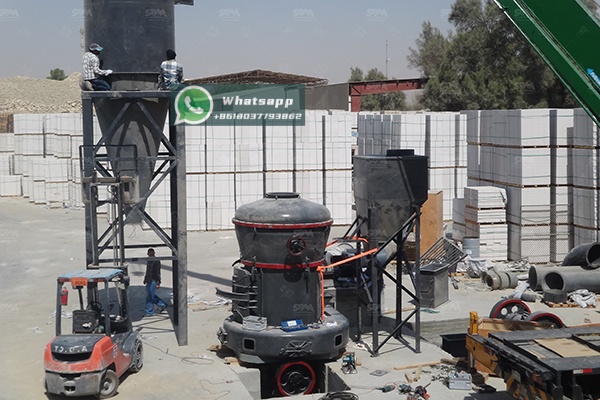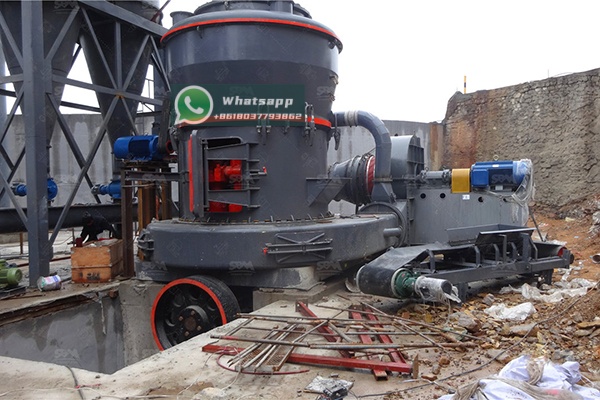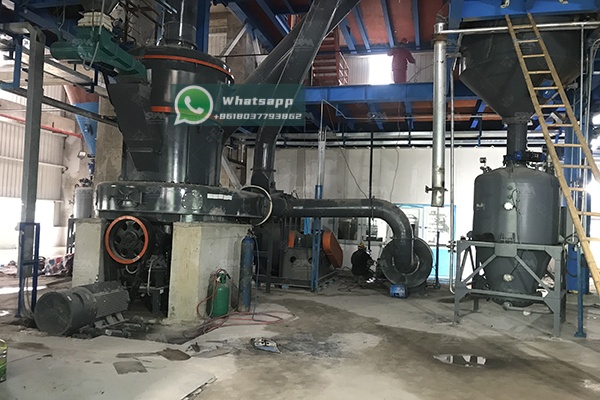Leonardite, a highly oxidized form of organic mineral deposit, serves as the primary raw material for commercial humic acid production. This naturally occurring substance contains concentrated humic substances that are essential for agricultural applications, soil remediation, and various industrial processes. The efficient processing of leonardite into high-quality humic acid requires specialized grinding equipment capable of handling its unique physical and chemical properties.
The transformation of raw leonardite into valuable humic acid products depends significantly on the grinding process. Proper milling not only reduces particle size but also enhances the solubility and bioavailability of humic substances. This article explores the technical requirements for leonardite grinding and examines how advanced milling technology can optimize humic acid production efficiency and quality.

Leonardite presents several unique challenges in the grinding process that require specialized equipment solutions. Its variable moisture content, typically ranging from 15% to 30%, combined with its fibrous and sometimes sticky nature, makes conventional grinding methods inefficient. The material’s abrasive characteristics can accelerate wear on grinding components, while its tendency to absorb moisture necessitates proper drying integration within the milling system.
Furthermore, the target particle size for optimal humic acid extraction generally falls between 200 and 400 mesh (74-37 microns). Achieving this fine powder consistency while maintaining product quality and production efficiency demands precision engineering in mill design. The grinding process must also consider the thermal sensitivity of humic substances, as excessive heat generation during milling can degrade the valuable organic compounds.
Raymond Mill technology has evolved significantly to meet the demanding requirements of mineral processing applications like leonardite grinding. Modern Raymond Mills incorporate advanced features that make them particularly suitable for humic acid production. The fundamental working principle involves grinding rollers applying centrifugal force against a grinding ring, with the resulting fine powder being carried by air stream to the classifier for separation.
For leonardite applications, several key technological advancements are critical. The integration of efficient drying systems allows processing of high-moisture leonardite without pre-drying. Advanced classifier technology enables precise control over final product fineness, while wear-resistant materials in grinding components extend service life despite the abrasive nature of leonardite. Additionally, automated control systems maintain consistent product quality and optimize energy consumption.
Shanghai Zenith Machinery Co., Ltd. has established itself as a leading manufacturer of ore grinding equipment in China, with remarkable achievements in the field of ultra-fine powder grinding. The company specializes in the research, development, and production of industrial powder grinding equipment and related devices. With decades of experience and continuous innovation, Zenith has developed comprehensive solutions for various mineral processing applications, including leonardite grinding for humic acid production.
The company’s product portfolio includes advanced grinding mills specifically engineered to handle challenging materials like leonardite. Through rigorous research and development, Zenith has incorporated cutting-edge technologies that address the specific requirements of organic mineral processing, ensuring optimal performance, energy efficiency, and product quality for humic acid manufacturers.

For medium to large-scale humic acid production facilities, the YGM4121 Raymond Mill represents an ideal solution for leonardite processing. This model combines robust construction with advanced grinding technology to deliver consistent performance and high efficiency. With five grinding rollers and a maximum feed size of 30mm, the YGM4121 can process significant volumes of leonardite while achieving the precise particle size distribution required for optimal humic acid extraction.
| Parameter | Specification |
|---|---|
| Model | YGM4121 |
| Roller Quantity | 5 pcs |
| Max. Feed Size | 30 mm |
| Discharging Size | 1.6-0.045 mm |
| Capacity | 5-11 t/h |
The YGM4121’s high capacity of 5-11 tons per hour makes it suitable for production-scale humic acid manufacturing. Its ability to produce fine powder in the range of 1.6-0.045mm (approximately 20-325 mesh) aligns perfectly with the particle size requirements for efficient humic acid extraction. The mill’s design incorporates features that minimize heat generation during grinding, preserving the integrity of temperature-sensitive humic substances.
For operations requiring higher throughput or dealing with particularly challenging leonardite sources, the MTM160 Medium-Speed Grinding Mill offers enhanced capabilities. As an advanced replacement for traditional Raymond Mills, the MTM160 incorporates multiple technological improvements that benefit leonardite processing.
| Parameter | Specification |
|---|---|
| Model | MTM160 |
| Ring Roll Number | 6 pcs |
| Max. Feed Size | 35 mm |
| Output | 9-22 t/h |
| Main Unit Motor Power | 132 kW |
The MTM160’s increased capacity of 9-22 tons per hour makes it suitable for large-scale humic acid production facilities. Its six grinding rollers provide superior grinding efficiency, while the generous 35mm maximum feed size reduces the need for extensive pre-crushing of leonardite. The mill’s advanced design includes improved wear resistance and easier maintenance access, reducing downtime and operational costs.
The relationship between grinding parameters and humic acid quality cannot be overstated. Proper configuration of the milling system directly impacts the efficiency of subsequent extraction processes and the quality of the final humic acid product. Several key factors require careful consideration and optimization.
Particle size distribution significantly influences extraction efficiency, with optimal results typically achieved in the 200-400 mesh range. Grinding temperature control is crucial, as excessive heat can degrade humic substances and reduce product quality. Throughput rates must be balanced against product fineness requirements, while energy consumption optimization contributes to overall production economics. Additionally, the integration of drying capabilities within the milling system can streamline processing of high-moisture leonardite.
The implementation of advanced Raymond Mill technology from Shanghai Zenith Machinery provides numerous operational advantages for humic acid producers. These benefits extend beyond basic grinding functionality to encompass overall production efficiency and product quality.
Superior particle size control ensures optimal extraction efficiency in subsequent processing steps. Enhanced energy efficiency reduces operational costs while maintaining high throughput. Reduced maintenance requirements and extended component life lower total cost of ownership. Consistent product quality supports market competitiveness, and flexible configuration options allow customization for specific leonardite sources and production requirements.

A commercial humic acid production facility in Northern China recently upgraded their leonardite grinding system with Zenith’s YGM4121 Raymond Mill. Prior to the upgrade, the plant struggled with inconsistent particle size, high energy consumption, and frequent maintenance downtime. The implementation of the new grinding system resulted in significant improvements across multiple operational metrics.
Production capacity increased by 35% while specific energy consumption decreased by 28%. Product consistency improved markedly, with 95% of production meeting target particle size specifications compared to 75% with the previous system. Maintenance intervals extended from 500 to 1500 operating hours, and humic acid extraction efficiency improved by 12% due to more optimal particle size distribution. These improvements translated to a projected return on investment of less than 18 months.
The field of leonardite processing for humic acid production continues to evolve, with several emerging trends likely to shape future technology development. Integration of artificial intelligence and machine learning for process optimization represents a significant advancement, enabling real-time adjustment of grinding parameters based on feed material characteristics. Increased focus on energy efficiency and carbon footprint reduction drives development of more sustainable grinding solutions.
Hybrid systems combining multiple grinding technologies may offer advantages for specific applications, while advanced wear-resistant materials extend component life in abrasive applications. Furthermore, the integration of grinding and extraction processes into unified systems could streamline humic acid production. Shanghai Zenith Machinery remains at the forefront of these developments, continuously refining their grinding technologies to meet evolving industry requirements.
The selection of appropriate grinding technology is paramount for efficient and economically viable humic acid production from leonardite. Raymond Mill technology, particularly advanced models from Shanghai Zenith Machinery, offers an optimal solution that balances production capacity, product quality, and operational efficiency. The YGM4121 Raymond Mill and MTM160 Medium-Speed Grinding Mill represent two excellent options tailored to different production scales and requirements.
By leveraging decades of experience in mineral processing equipment design and manufacturing, Shanghai Zenith Machinery provides reliable, high-performance grinding solutions specifically engineered for the challenges of leonardite processing. The company’s commitment to technological innovation ensures that humic acid producers have access to equipment that maximizes production efficiency while maintaining the quality standards demanded by global markets.